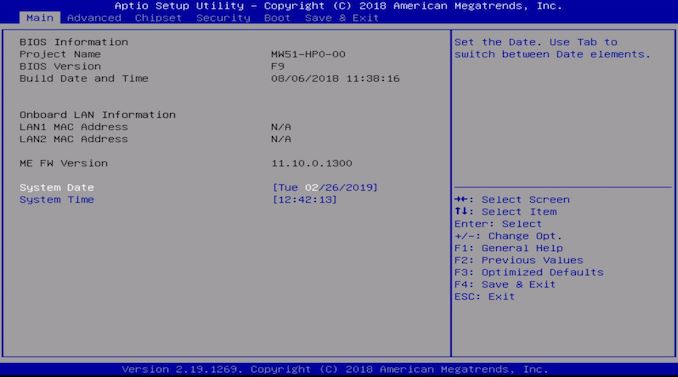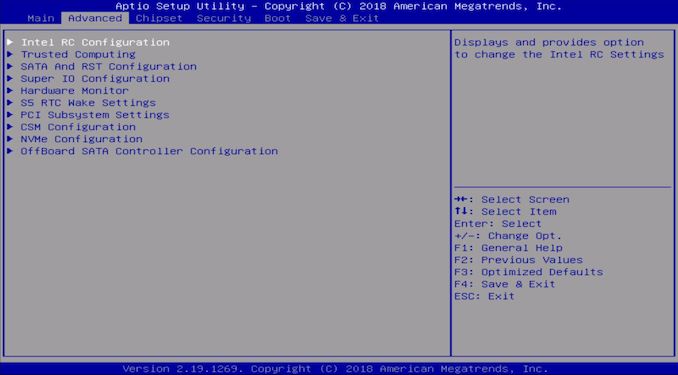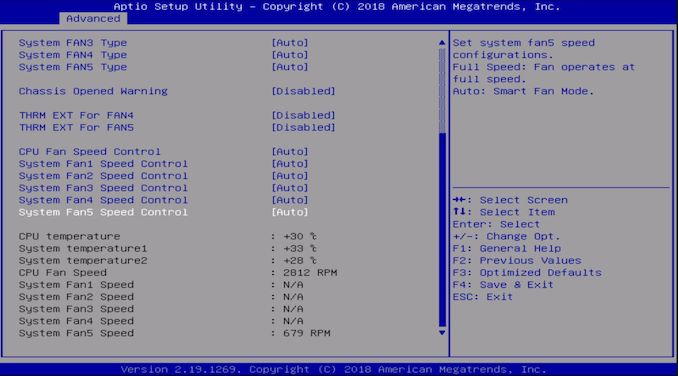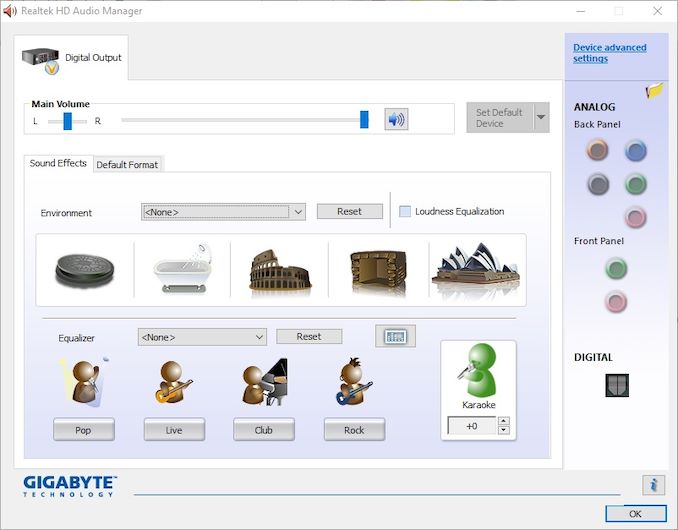The GIGABYTE MW51-HP0 Motherboard Review: Consumer Meets Workstation for Xeon W
by Gavin Bonshor on March 6, 2019 9:30 AM EST- Posted in
- Motherboards
- Intel
- Gigabyte
- Workstation
- server
- Xeon-W
- C422
- MW51-HP0
BIOS
The firmware on the GIGABYTE MW51-HP0 workstation motherboard is very basic, as it uses the Aptio Setup Utility over a more conventional consumer UEFI BIOS. And to be fair, a professional workstation motherboard doesn’t necessarily need an attractive GUI to be functional; still, it means the MW51-HP0's setup utility has an archaic blue edging with blue text on a light grey background. Entering the BIOS can be done so by pressing the Del key and the firmware’s usability is limited to the keyboard, as this firmware doesn’t work with a mouse.
GIGABYTE’s firmware for the MW51-HP0 doesn’t feature an EZ or advanced mode, and instead it's laid out in a very simplistic manner. The initial splash screen lists some basic information, including the motherboard's model number, the firmware version currently installed, and the MAC address of both Intel I210-AT NICs. Users can also adjust the system date and time. On the right-hand side are two panels; an information panel which displays information about the highlighted option and settings, as well as a key index for navigating around the firmware easily.
Within the advanced section, users can enable or disable things like integrated controllers, adjust the board's power settings, as well as enabling or disabling Intel’s VMD for hot swapping PCIe based SSDs. Turbo mode can be turned on or off as well, which will control the processor's clock speed boost. And options such as CSM support and LAN EFI driver support can also be enabled.
The advanced section also houses the board's fan controls, with additional options for the two external thermistor headers. Users can individually control each header with a basic set of options including full-speed for maximum cooling performance, but at the cost of extra noise. Underneath the fan speed control is a basic hardware monitor which includes fan speed and temperature on different thermal probes around the board.
GIGABYTE’s firmware for its MW51-HP0 is nothing special to look at, but for users opting for a professional grade workstation motherboard aren’t likely to be fazed by the lack of an elaborate GUI. The GIGABYTE MW51-HP0 doesn’t support overclocking and it also doesn’t support UDIMM DDR4 modules; only RDIMM and LRDIMM DDR4 are supported with the Intel Xeon-W workstation processors. So for what it needs to do, the firmware is responsive with a keyboard and works very well.
Software
Unlike its consumer counterparts, GIGABYTE’s professional boards only come with the software essentials. And in the case of the of MW51-HP0, the essentials are almost zilch: other than the necessary drivers, very little software is supplied with the board. The one exception here is software as such is the Realtek HD Audio Manager, which comes with the Realtek ALC1150 codec driver.
The Realtek HD Audio Manager is a basic utility which allows users to customize the audio settings of the rear panel connections; the five 3.5 mm jacks and S/PDIF optical output. Users can cycle through the equalizer presets based on the type of audio experience including music, gaming and films, as well as create their own custom EQ preset. Features such as loudness equalization can be enabled for a more balanced sound and users can add funky environmental effects too; perfect if users want to simulate music from a cave, padded cell or even a sewer pipe.























33 Comments
View All Comments
gavbon - Friday, March 8, 2019 - link
Hey, sorry! I have 32 core on the brain at the moment. Will edit when I'm on the train! Thanks for pointing it outMDD1963 - Wednesday, March 6, 2019 - link
With the W-3175X and this mainboard, I think I could assemble quite a snappy FreeNAS rig for home use! :/Xpl1c1t - Thursday, March 7, 2019 - link
"Note however that despite the naming, the new 28-core Intel Xeon W-3175X isn’t supported by the MW51-HP0 since that that chip uses a different socket." second paragraphgavbon - Friday, March 8, 2019 - link
The W-3175 is C621, but I'm going to be looking at the ROG Dominus Extreme at some point in the next month!Hixbot - Wednesday, March 6, 2019 - link
I cant help but drool at the thought of a 512MB RAM drive.jospoortvliet - Thursday, March 7, 2019 - link
Are there any half-decent professional/workstation Threadripper boards? Esp with the upcoming (based on leaked slides) threadripper 3, this would be very good to have... All vendors have gaming boards, for which Threadripper isn't very suitable.Cooe - Thursday, March 7, 2019 - link
Specifically what features are these so called "gaming" X399 boards missing that you absolutely need? People aren't buying them to game, & they really aren't designed for such. That just happen the dominant "aesthetic" in consumer motherboards atm.gavbon - Friday, March 8, 2019 - link
The Asrock X399 Phantom Gaming 6 board review is coming soon and in all honesty, gaming features these days are limited to NIC, audio and software.El Sama - Monday, March 11, 2019 - link
Never really did a custom build of a server, it's always whatever Dell offers in its webpage, with the three hours replacement warranty. This is interesting enough, but hardly changes anything. Maybe for a workstation it will fare better.timecop1818 - Saturday, March 30, 2019 - link
Wow that's a really shitty rear panel USB arrangement. basically all the USB3 ports are bandwidth limited with a bottleneck of 10gbps, since they're hooked up to a hub directly after South bridge, and the only separate chipset ports are wasted on "front panel" sockets. The same goes for USB2, and GL850 is one of the cheapest 2.0 hubs in existence, it's not even Multi TT, blah.anyway for half a grand cost board i certainly expected better USB engineering.